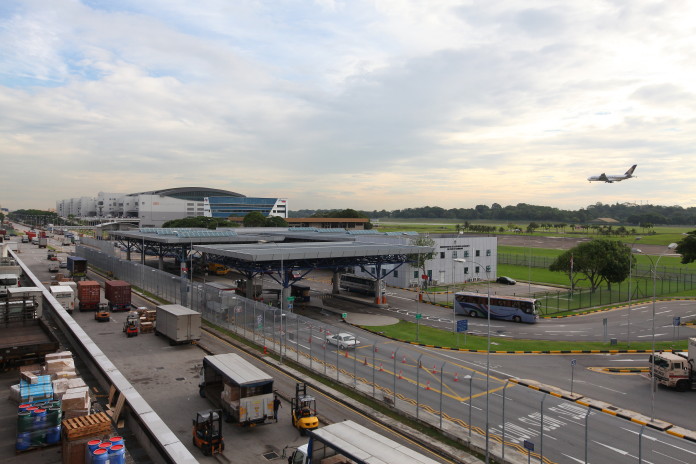

Changi Airport has seen volumes stay flat in 2015 up to October and is expecting this trend to continue into the start of next year, writes James Muir.
Between January and October this year, Changi handled 1.5 million tonnes of cargo, the same as in 2014. Some months of the year were noticeably above 2014, such as February posting an increase of 7.3 per cent to 136,000 tonnes, while others were down, particularly in July, which declined by 4.8 per cent to 147,500 tonnes.
Airport operator Changi Airport Group senior manager for cargo and logistics development, Phau Hui Hoon tells Air Cargo Week (ACW) despite volumes staying flat, certain areas have seen significant increases. She says: “In terms of niche cargo segments, there was strong double digit growth in the live animals and pharmaceuticals cargo segments, growing 11 per cent and 34 per cent on-year respectively from January to October 2015.”
As for 2016, Hoon it is likely to start slowly though may pick up by the end of the year. She tells ACW: “Going into 2016, air cargo volumes are likely to remain flat, given the slowdown in major economies such as Europe, and the weaker than expected recovery of the US economy. Nevertheless, we remain cautiously optimistic that air cargo volumes will recover by the end of 2016.”
With continuing development in Asia, Changi is expecting growth in the future, particularly from Association of South East Asian Nations (ASEAN) countries. Hoon says: “Progressive economic integration within ASEAN would potentially spur airfreight demand in the region. As the cargo hub in the region, Changi Airport is well placed to meet increased demand for intra-Asia airfreight service with its excellent connectivity, service, reliability and efficiency.”
One area Hoon expects to see continued growth in is pharmaceuticals, which she says is proving “robust”. “In addition to the healthy growth, pharmaceutical cargo also offers a higher yield due to the special care and precautions required to transport such products.”
Pharmaceuticals only represent a small proportion of cargo at Changi but it is valuable and expected to grow. Hoon says: “Although the share of pharmaceutical as a proportion of air cargo is small at this juncture, increased global spending in healthcare and medicines and strong growth in emerging markets will continue to drive demand for pharmaceutical cargo.”
To handle ever growing pharmaceutical volumes, ground handlers have constructed SATS Coolport and dnata Coolchain. Hoon says: “SATS Coolport has also been appointed as the world’s first facility to receive the IATA [International Air Transport Association] Centre of Excellence for Independent Validators for pharmaceutical handling.”
“With these enhancements, coupled with Changi Airport’s strong connectivity, we have seen an increase of pharmaceutical cargo handled at the airport,” Hoon adds.
As part of its continued development, Changi will be converting its third runway to civilian use, to be ready in the mid-2020s. As part of the project, known as Changi East, a 1,800 hectare site will be used to build a new mega terminal, extending the third runway, industrial facilities, related infrastructure and transport links.
Hoon says: “To support the long term growth of Singapore’s cargo and logistics sectors, dedicated facilities for airfreight and air express services as well as MRO [maintenance, repair and overhaul] activities, will be developed as part of the Changi East development.
“This development will secure the long-term growth of Singapore’s cargo and logistics sectors, and strengthen Changi Airport’s position as a major air hub.”













